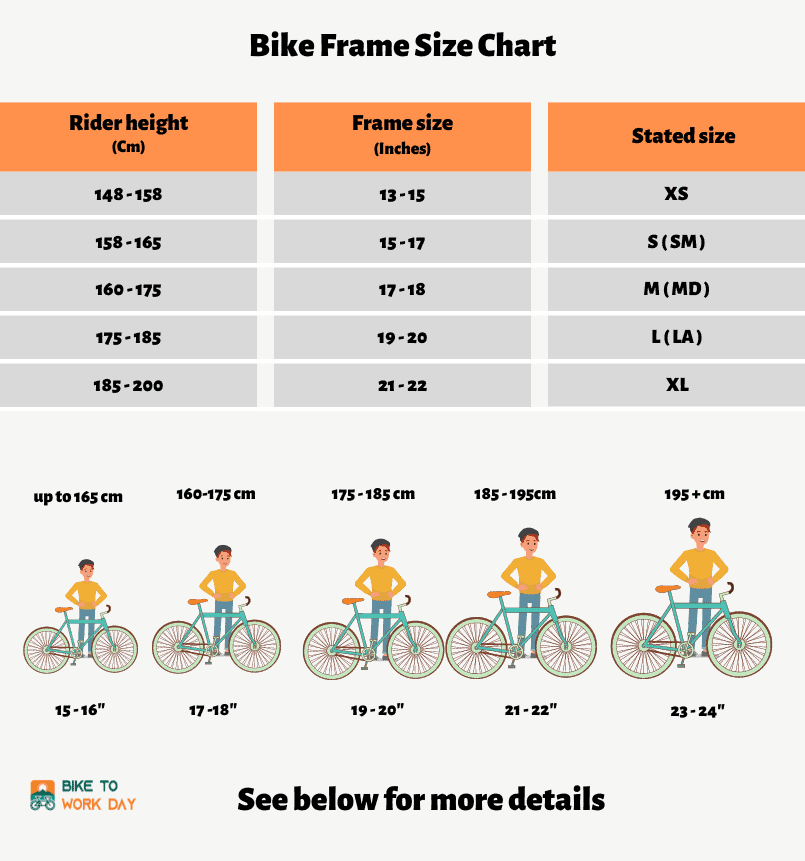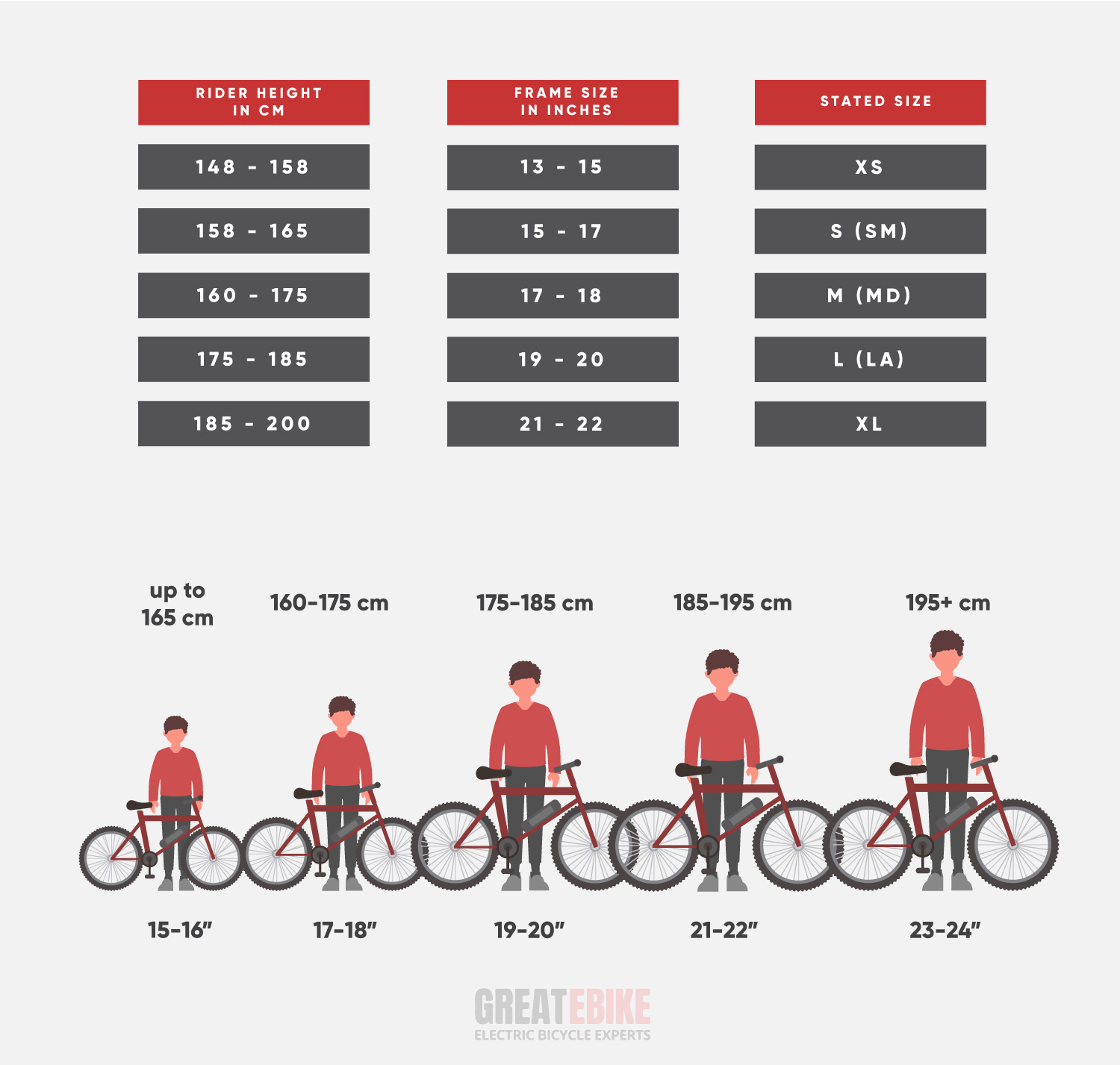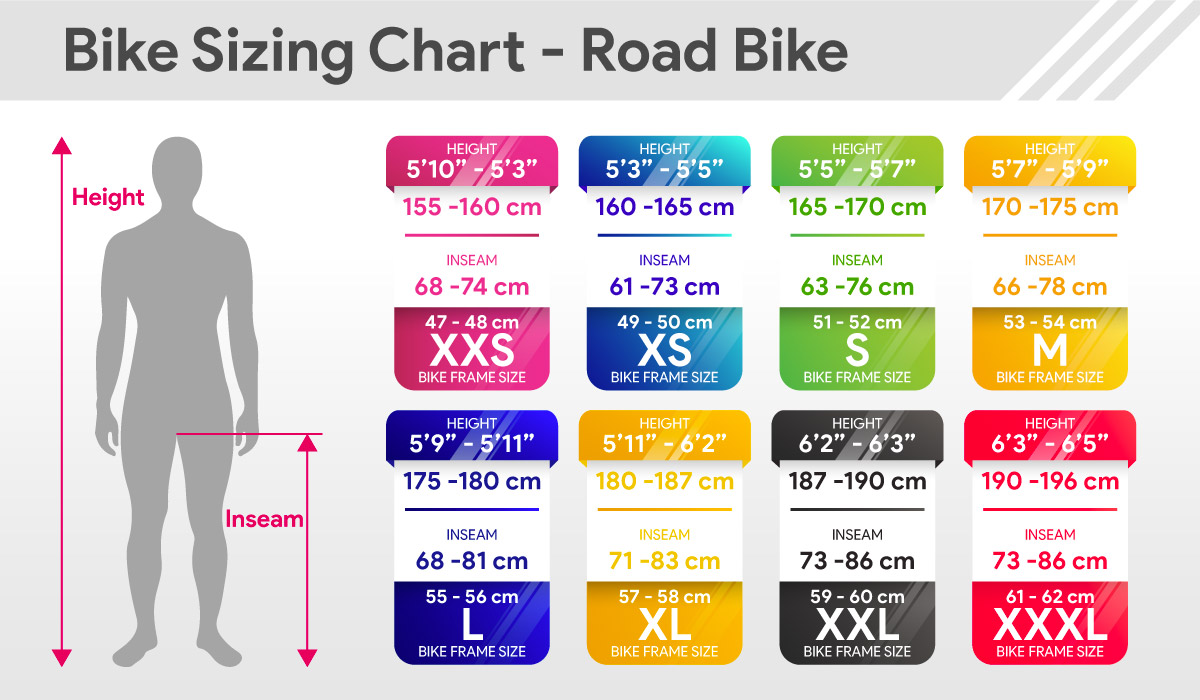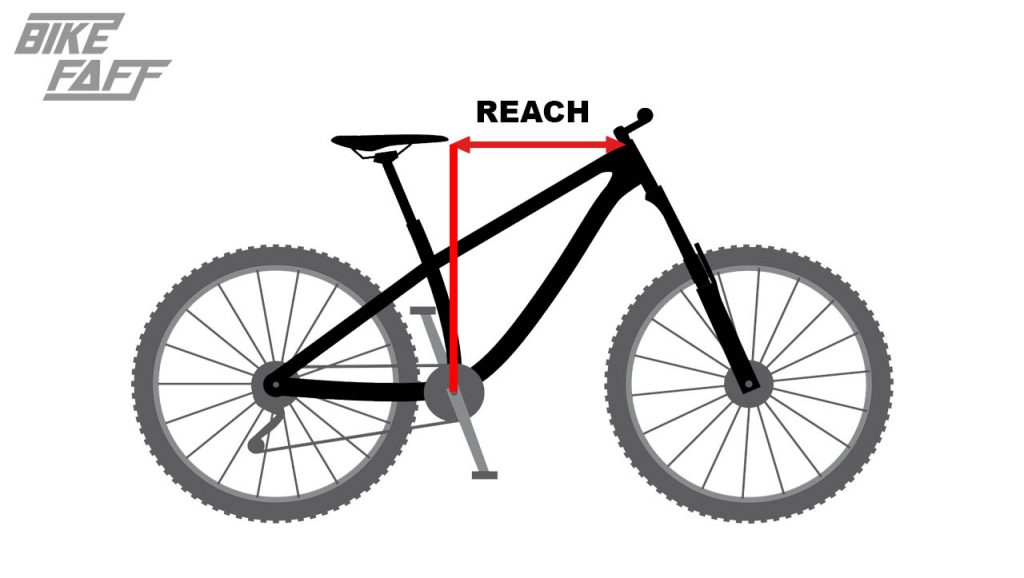Why Choosing the Right MTB Frame Size is Crucial for a Comfortable and Efficient Ride
When it comes to mountain biking, having the right frame size is essential for a comfortable and efficient ride. A frame that is too small or too large can lead to a range of issues, including poor handling, reduced stability, and increased fatigue. In fact, a study by the International Mountain Bicycling Association found that riders who chose the wrong frame size were more likely to experience discomfort, pain, and even injury.
The importance of choosing the right MTB frame size cannot be overstated. A frame that is tailored to a rider’s height and inseam can make all the difference in their riding experience. For example, a rider with a longer inseam may require a larger frame size to accommodate their leg length, while a rider with a shorter inseam may prefer a smaller frame size for improved handling and maneuverability.
Furthermore, the right frame size can also impact a rider’s performance and overall enjoyment of the sport. A frame that is too small can cause a rider to feel cramped and uncomfortable, leading to reduced power output and decreased endurance. On the other hand, a frame that is too large can make it difficult for a rider to control the bike, particularly on technical terrain.
So, how can riders determine their ideal MTB frame size? The answer lies in understanding the relationship between rider height and frame size. By considering factors such as seat tube length, top tube length, and standover height, riders can choose a frame size that is tailored to their unique needs and preferences.
In the next section, we will delve deeper into the world of MTB frame size charts, exploring the key measurements and how they relate to rider height and inseam. By understanding these concepts, riders can make informed decisions when choosing their next mountain bike, ensuring a comfortable and efficient ride that meets their unique needs and preferences.
Understanding MTB Frame Size Charts: A Breakdown of the Key Measurements
When it comes to choosing the right MTB frame size, understanding the key measurements used in frame size charts is crucial. The three main measurements to consider are seat tube length, top tube length, and standover height. These measurements are used to determine the overall size of the frame and how it will fit the rider.
Seat tube length is the measurement from the center of the bottom bracket to the top of the seat tube. This measurement is important because it affects the rider’s leg length and comfort. A longer seat tube length can provide more comfort for riders with longer legs, while a shorter seat tube length can be better suited for riders with shorter legs.
Top tube length is the measurement from the center of the head tube to the center of the seat tube. This measurement affects the rider’s reach and comfort. A longer top tube length can provide more comfort for riders with longer torsos, while a shorter top tube length can be better suited for riders with shorter torsos.
Standover height is the measurement from the ground to the top of the top tube. This measurement is important because it affects the rider’s ability to stand over the bike and maintain control. A lower standover height can provide more confidence for riders, especially on technical terrain.
When choosing an MTB frame size, riders should consider their height and inseam to determine the ideal frame size. For example, a rider who is 5’9″ (175 cm) with an inseam of 31″ (79 cm) may prefer a medium or large frame size, depending on the specific bike and manufacturer. By understanding the key measurements used in frame size charts, riders can make informed decisions when choosing their next mountain bike.
In addition to considering the key measurements, riders should also think about their riding style and preferences. For example, a rider who prefers a more aggressive riding position may prefer a smaller frame size, while a rider who prefers a more upright riding position may prefer a larger frame size.
By taking the time to understand MTB frame size charts and considering their individual needs and preferences, riders can find the perfect fit and enjoy a comfortable, efficient ride.
The Relationship Between Rider Height and MTB Frame Size: What You Need to Know
When it comes to choosing the right MTB frame size, rider height is a crucial factor to consider. The general guidelines for matching rider height to MTB frame size are as follows:
For riders between 5’2″ and 5’6″ (157 cm and 168 cm), a small or medium frame size is usually recommended. This is because riders in this height range typically have a shorter inseam and require a smaller frame size to maintain proper fit and comfort.
For riders between 5’7″ and 5’11” (170 cm and 180 cm), a medium or large frame size is usually recommended. This is because riders in this height range typically have a longer inseam and require a larger frame size to maintain proper fit and comfort.
For riders between 6’0″ and 6’4″ (183 cm and 193 cm), a large or extra-large frame size is usually recommended. This is because riders in this height range typically have a longer inseam and require a larger frame size to maintain proper fit and comfort.
It’s worth noting that these are general guidelines, and the ideal frame size for a given rider may vary depending on their individual needs and preferences. For example, a rider who prefers a more aggressive riding position may prefer a smaller frame size, while a rider who prefers a more upright riding position may prefer a larger frame size.
Some popular MTB frame sizes and their corresponding rider height ranges include:
Trek Fuel EX: Small (5’2″-5’6″), Medium (5’7″-5’11”), Large (6’0″-6’4″)
Specialized Stumpjumper: Small (5’2″-5’6″), Medium (5’7″-5’11”), Large (6’0″-6’4″)
Giant TCX: Small (5’2″-5’6″), Medium (5’7″-5’11”), Large (6’0″-6’4″)
By considering rider height and the general guidelines outlined above, riders can make informed decisions when choosing their next mountain bike and ensure a comfortable, efficient ride.
Factors to Consider When Choosing an MTB Frame Size: More Than Just Height
While rider height is a crucial factor in determining the ideal MTB frame size, it’s not the only consideration. Other factors, such as riding style, terrain, and personal preference, can also play a significant role in choosing the right frame size.
Riding style, for example, can greatly impact the ideal frame size. Aggressive riders who prefer a more aerodynamic position may prefer a smaller frame size, while riders who prefer a more upright position may prefer a larger frame size. Additionally, riders who plan to ride in technical terrain may prefer a smaller frame size for improved maneuverability, while riders who plan to ride in smoother terrain may prefer a larger frame size for increased stability.
Terrain is another important factor to consider when choosing an MTB frame size. Riders who plan to ride in hilly or mountainous terrain may prefer a smaller frame size for improved climbing ability, while riders who plan to ride in flat terrain may prefer a larger frame size for increased speed and efficiency.
Personal preference is also a significant factor in choosing an MTB frame size. Some riders may prefer a more compact frame size for improved handling and maneuverability, while others may prefer a larger frame size for increased comfort and stability.
Ultimately, the ideal MTB frame size will depend on a combination of these factors, including rider height, riding style, terrain, and personal preference. By considering these factors and using the guidelines outlined in this article, riders can make informed decisions when choosing their next mountain bike and ensure a comfortable, efficient ride.
For example, a rider who is 5’9″ (175 cm) and prefers a more aggressive riding position may prefer a medium frame size, while a rider who is 5’9″ (175 cm) and prefers a more upright position may prefer a large frame size. Similarly, a rider who plans to ride in technical terrain may prefer a smaller frame size, while a rider who plans to ride in smoother terrain may prefer a larger frame size.
By taking the time to consider these factors and choose the right MTB frame size, riders can enjoy a more comfortable, efficient, and enjoyable ride.
Real-World Examples: How to Choose the Right MTB Frame Size for Your Next Bike
Let’s take a look at some real-world examples of popular MTB bikes and how to choose the right frame size based on rider height and other factors.
For example, the Trek Fuel EX is a popular trail bike that comes in a range of frame sizes, including small, medium, large, and extra-large. According to Trek’s frame size chart, a rider who is 5’9″ (175 cm) with an inseam of 31″ (79 cm) would be best suited to a medium frame size. However, if the rider prefers a more aggressive riding position, they may prefer a small frame size, while a rider who prefers a more upright position may prefer a large frame size.
Another example is the Specialized Stumpjumper, which comes in a range of frame sizes, including small, medium, large, and extra-large. According to Specialized’s frame size chart, a rider who is 5’11” (180 cm) with an inseam of 32″ (81 cm) would be best suited to a large frame size. However, if the rider plans to ride in technical terrain, they may prefer a smaller frame size for improved maneuverability, while a rider who plans to ride in smoother terrain may prefer a larger frame size for increased speed and efficiency.
These examples illustrate the importance of considering multiple factors when choosing an MTB frame size, including rider height, inseam, riding style, and terrain. By taking the time to consider these factors and using the guidelines outlined in this article, riders can make informed decisions when choosing their next mountain bike and ensure a comfortable, efficient ride.
In addition to considering the frame size chart, riders should also think about their personal preferences and riding style. For example, a rider who prefers a more aggressive riding position may prefer a smaller frame size, while a rider who prefers a more upright position may prefer a larger frame size.
Ultimately, the key to finding the perfect MTB frame size is to consider multiple factors and use the guidelines outlined in this article. By doing so, riders can ensure a comfortable, efficient ride and enjoy the many benefits of mountain biking.
Common Mistakes to Avoid When Choosing an MTB Frame Size
When choosing an MTB frame size, there are several common mistakes that riders can make. One of the most common mistakes is choosing a frame that is too small or too large. A frame that is too small can lead to a cramped riding position, while a frame that is too large can make it difficult to control the bike.
Another common mistake is not considering the rider’s inseam. A rider’s inseam can greatly affect the ideal frame size, as a longer inseam may require a larger frame size to accommodate the rider’s leg length.
Additionally, riders may not consider their riding style and terrain when choosing a frame size. For example, a rider who prefers a more aggressive riding position may prefer a smaller frame size, while a rider who prefers a more upright position may prefer a larger frame size.
To avoid these mistakes, riders should take the time to consider their height, inseam, riding style, and terrain when choosing an MTB frame size. By doing so, riders can ensure a comfortable, efficient ride and avoid common mistakes that can lead to discomfort and poor performance.
Here are some tips to avoid common mistakes when choosing an MTB frame size:
1. Consider your height and inseam: Use a frame size chart to determine the ideal frame size based on your height and inseam.
2. Think about your riding style: Consider your riding position and style when choosing a frame size. If you prefer a more aggressive position, you may prefer a smaller frame size.
3. Consider the terrain: Think about the terrain you will be riding on and choose a frame size that is suitable for that terrain. For example, a smaller frame size may be better suited for technical terrain, while a larger frame size may be better suited for smoother terrain.
By following these tips, riders can avoid common mistakes and ensure a comfortable, efficient ride.
Test Ride Before You Buy: The Importance of Trying Out an MTB Frame Size
When it comes to choosing the right MTB frame size, there’s no substitute for test riding a bike before purchasing. Test riding allows riders to experience the bike’s handling, stability, and overall performance firsthand, and can help determine whether the frame size is a good fit.
Test riding is especially important when it comes to frame size, as a bike that is too small or too large can be uncomfortable and affect the rider’s performance. By test riding a bike, riders can get a feel for the bike’s geometry and ensure that it is a good match for their riding style and preferences.
When test riding a bike, riders should pay attention to the following factors:
1. Comfort: Does the bike feel comfortable to ride? Are the handlebars and seat at a comfortable height?
2. Handling: How does the bike handle? Is it stable and responsive, or does it feel twitchy and unpredictable?
3. Performance: How does the bike perform? Is it fast and efficient, or does it feel slow and sluggish?
By considering these factors and test riding a bike, riders can ensure that they find the perfect MTB frame size for their needs and preferences.
In addition to test riding, riders should also consider the following tips when choosing an MTB frame size:
1. Check the manufacturer’s sizing chart: Each manufacturer has its own sizing chart, so be sure to check the chart for the specific bike you’re interested in.
2. Consider your riding style: If you’re an aggressive rider, you may prefer a smaller frame size for better handling and maneuverability.
3. Think about your terrain: If you’ll be riding in technical terrain, you may prefer a smaller frame size for better control and stability.
By following these tips and test riding a bike, riders can ensure that they find the perfect MTB frame size for their next adventure.
Conclusion: Finding the Perfect MTB Frame Size for Your Next Adventure
Choosing the right MTB frame size is crucial for a comfortable and efficient ride. By considering rider height, inseam, riding style, terrain, and personal preference, riders can find the perfect fit and enjoy a more enjoyable and efficient ride.
In this article, we’ve discussed the importance of choosing the right MTB frame size, including how frame size affects handling, stability, and overall performance. We’ve also provided an overview of the key measurements used in MTB frame size charts, including seat tube length, top tube length, and standover height.
We’ve also discussed the general guidelines for matching rider height to MTB frame size, including the common height ranges for each frame size. Additionally, we’ve provided real-world examples of popular MTB bikes, such as the Trek Fuel EX or the Specialized Stumpjumper, to illustrate how to choose the right frame size based on rider height and other factors.
Finally, we’ve emphasized the importance of test riding an MTB before purchasing, especially when it comes to frame size. By test riding a bike, riders can ensure that they find the perfect fit and enjoy a comfortable, enjoyable ride.
By following the guidelines and tips provided in this article, riders can find their perfect fit and enjoy a more comfortable, efficient ride. Remember to consider your rider height, inseam, riding style, terrain, and personal preference when choosing an MTB frame size, and don’t be afraid to test ride a bike before purchasing.
With the right MTB frame size, riders can enjoy a more enjoyable and efficient ride, and take their mountain biking experience to the next level.








